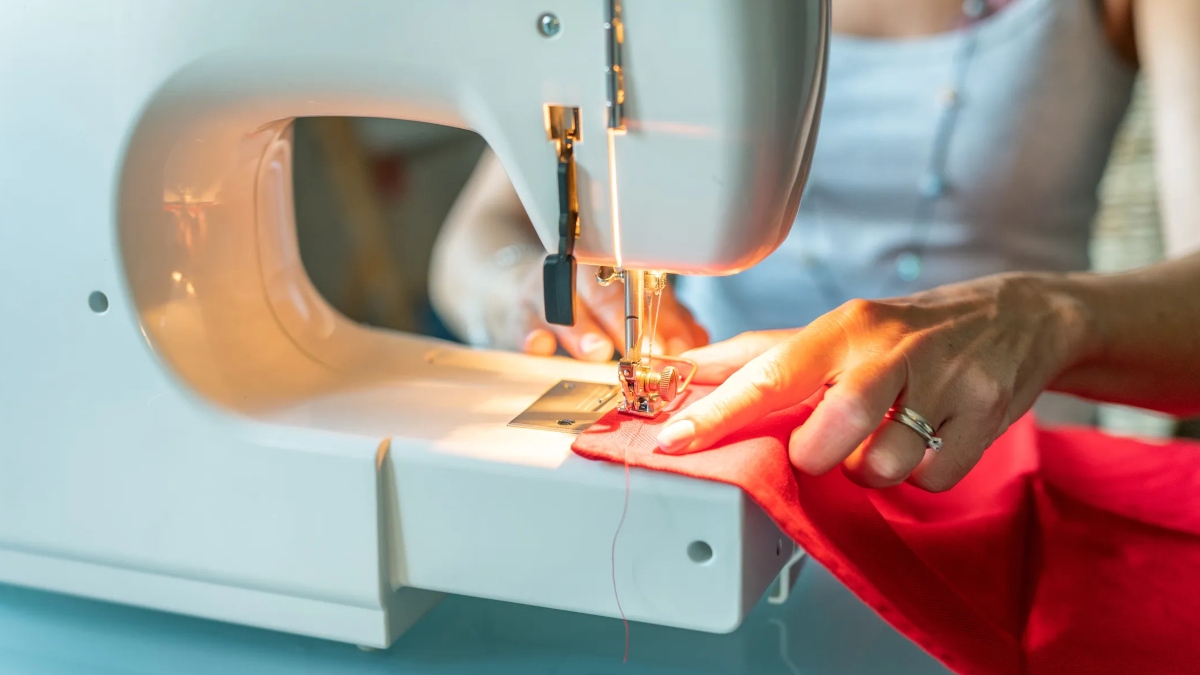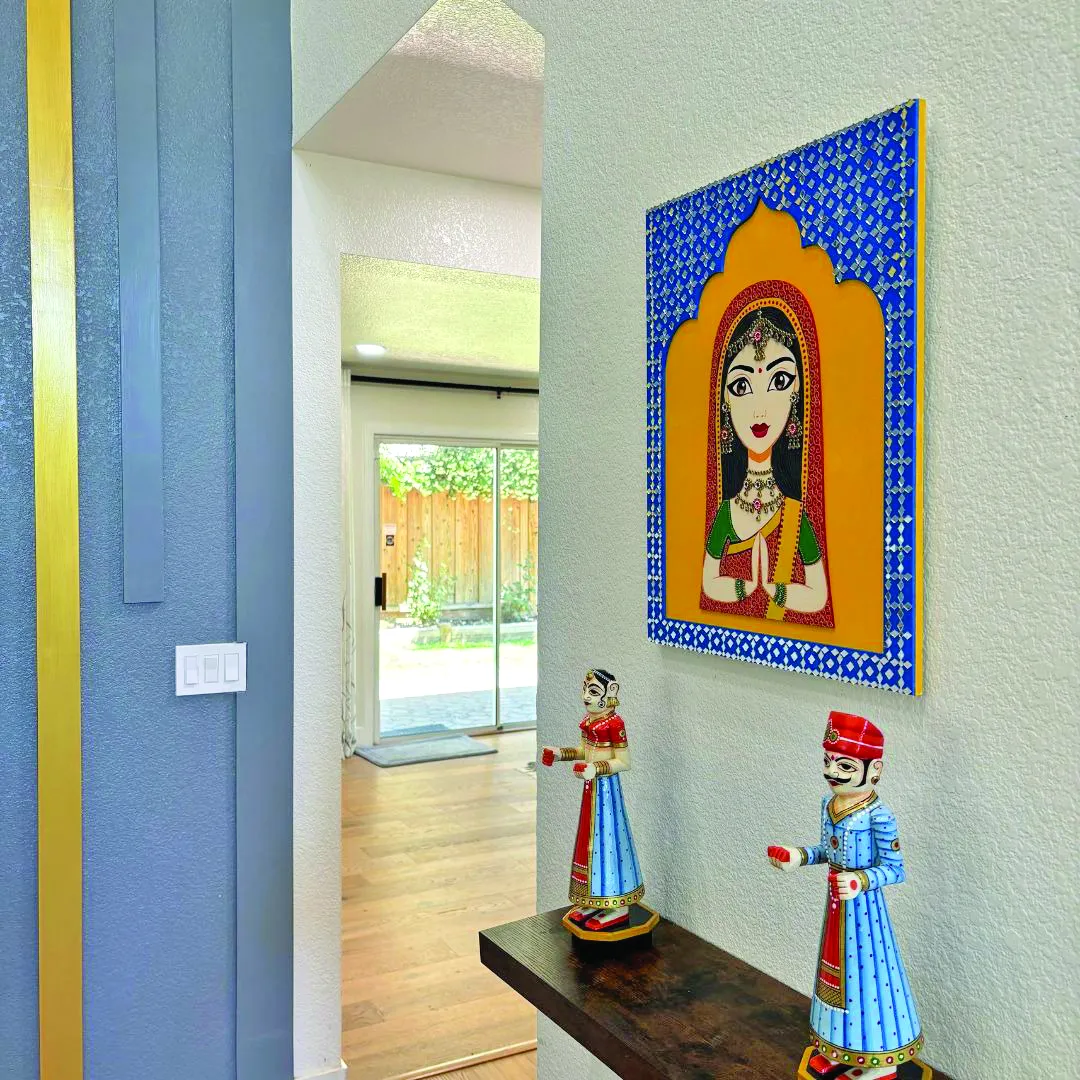Let us start at the very beginning. It is a very good place to start. And when it is the beginning of your sewing journey, we can definitely help you to ensure your journey is full of fun, creativity, and learning. For all those of you who spend hours mesmerised by sewing projects on social media and have been feeling a strong affinity for everything to do with sewing but do not know where to start, below are a few things that will set you off on a delightful path. I have realised sewing is not just an expression of creativity; it is also a representation of one’s personality. First things first what is it that you feel instinctively attracted to? Do you enjoy the stitching part of sewing or the accessorising part of sewing? I embarked on my sewing journey just about a year ago. Here are a few tips that set me off on a hobby that is fast becoming addictive.
BUYING THE RIGHT SEWING MACHINE
Buy a machine that is extremely simple to use and allows for a bit of creative fun, i.e. the Usha Janome automatic machines not only allow you to stitch but also have decorative stitches that can spur your imagination. The best part is that there are a whole slew of tutorials on how to get started on UshaSew.com that teach you everything from threading the machine to DIY projects ranging from the simple to the complex. The best part of these machines is the automatic threaded, which spares you the pain of repeated attempts at licking the thread and trying to put it through.
My recommendation would be to go to a showroom and take a demo of these machines, do a trial, and then select. Understand how to use the foot pedal. Getting started, sew on paper, the easiest way to get a grip on how you need to manoeuvre the material being stitched is to practise on A4 sheets. Draw straight lines on one, a thick spiral on another, and triangles within triangles on a third. Stitch this without threading the needle. The needle’s path will tell you how well you are doing. You will also get used to how much pressure you need to exert on the foot pedal and get a better grip on the speed. If you enjoy doing this, then proceed to the next step the way I did. I took a cream piece of casement, almost 14 inches by 28 inches, and decided to get creative. I used various coloured threads to just stitch randomly. I also experimented with decorative stitches. It was so much fun, and I have the unique piece of art I have created. I have also experimented with using various shades of red on one, blue, and green. They help de-stress as there is no agenda other than to have fun. There is no right or wrong. You also get comfortable with the machine as you do this and understand what each stitch looks like.
START WITH THE SIMPLE STUFF
Now that you have gotten the feel of the machine, let us get to practise the basics. If you have a tailor close by, get some clothes extras that they usually discard. Make sure it is cotton as the material is easier to control. Wash these pieces so that they do not shrink afterward and cut them into squares these can be 4-5 inches each. These can be in all colours and prints.
Start by keeping two pieces with the right side face-to-face and stitching along one edge. Make as many pairs as you can. Then start by joining these. Make strips of 6-8 squares each. Now you can place them face to-face length-wise and stitch along the edge. Once you have a nice square, you can fold in the edges, and viola, your very first stitching project is ready. If you get the hang of it, you can attempt a larger piece and then get a tailor to put in a lining to make a quilt.
Let me emphasise here the importance of consistency, patience, and practise in the process as you work your way up the difficulty level by adding to your work using lace, or attaching zippers, and focusing on sewing with neatly finished edges.
FEEL GOOD ABOUT EASY DIY SEWING PROJECTS
There are multiple easy tutorials online and even on UshaSew.com that will help you start on your best foot. These are simple to make with great results. So go on and save the planet. Create your tote bag. Then make a multipurpose zipper pouch; these are always handy. You can make your very own Rakhi’s too. Whether you are a couple, siblings, or BFFs, sewing gives you the freedom to creatively express your feelings for those you love in personalised forms as you make something special from scratch.
In fact, with kids at home for the summer vacation, now’s a great time to introduce them and maybe yourself too to this great hobby that also helps lower screen time while learning a creative skill. Get a sewing teacher, throw some creative sewing parties for your kids and their friends, and see how much fun they have. With constant practise and patience, you will soon begin to revel in the process of sewing as you realise that sewing is more of an art form and, like other art forms, helps dissolve the tension and stress away. The hobby will soon become fun as you experiment to find your expression and happy zone. What’s more, you never know when the hobby will ignite the passion to go professional with it. After all, this is where all the great designers start their journey. Also, sewing helps young couples express their feelings in a more personalised form by creating something special for each other, including putting embossed signatures on special dresses for each other.
The author is President – Sewing Machines, Usha International























